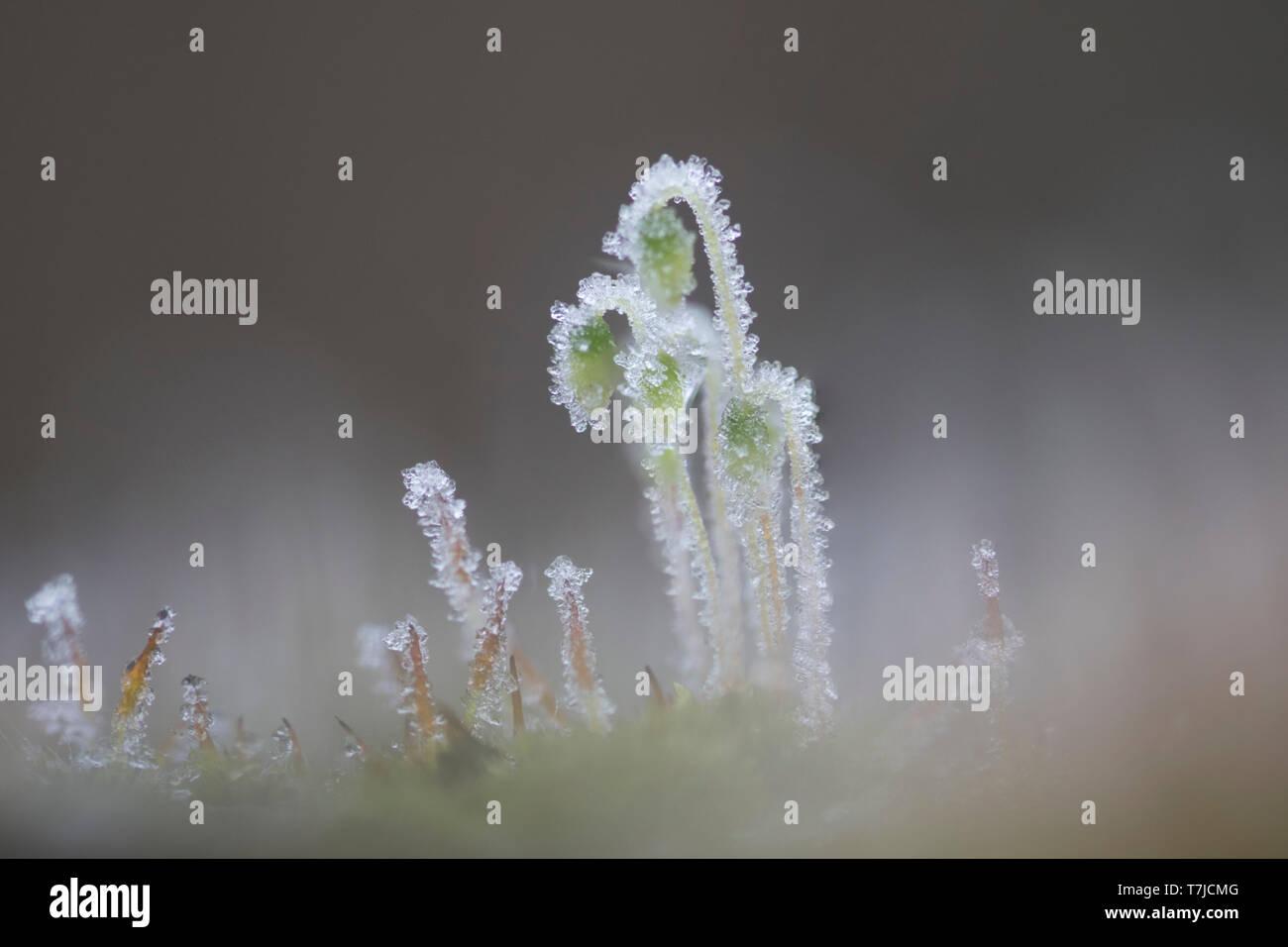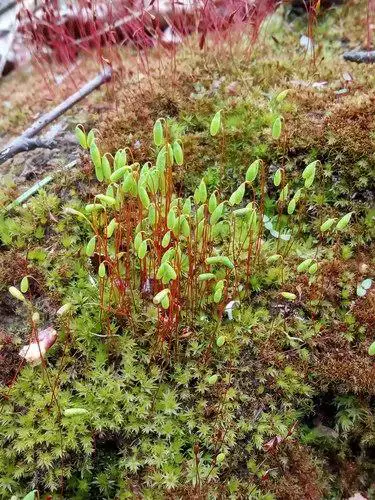
pohlia-nutans-moss-macro-low-point-view-red-seta-spore-capsules-220602028.jpg from: https://www.dreamstime.com/pohlia-nutans-moss-macro-low-point-view-red-seta-spore-capsules-image220602028
Introduction
In the vast and captivating world of bryophytes, the Pohlia nutans (Hedw.) Lindb. moss stands out as a remarkable member of the Mniaceae family. Also known simply as Pohlia, this unassuming yet fascinating plant has captured the hearts of moss enthusiasts worldwide. Let’s delve into the intriguing realm of this diminutive marvel and unravel its secrets.
Background
Before we explore the intricate details of Pohlia nutans, it’s essential to understand the broader context of bryophytes. These non-vascular plants, which include mosses, liverworts, and hornworts, are often overlooked but play a crucial role in various ecosystems. They are among the oldest land plants on Earth, with a rich evolutionary history dating back millions of years.

common-nodding-moss-pohlia-nutans-T7JCMG.jpg from: https://www.alamy.com/stock-photo/pohlia-nutans.html
Main Content
Morphology and Identification
Pohlia nutans is a small, acrocarpous moss that forms dense tufts or cushions. Its slender stems can reach up to 5 centimeters in height, and the leaves are narrowly lanceolate, with a distinctive midrib running along their length. One of the most striking features of this moss is its

medium.jpg from: https://www.inaturalist.org/taxa/154170-Pohlia-nutans
nodding capsules, which give it the specific epithet “nutans,” derived from the Latin word for “nodding.”
Global Distribution and Habitat
This resilient moss has a widespread distribution, found on every continent except Antarctica. It thrives in a variety of habitats, including moist soil, rocks, tree bases, and even disturbed areas like roadsides and gardens. Pohlia nutans is particularly abundant in temperate regions, where it can form extensive carpets or patches.
Ecological Roles and Adaptations
Despite its diminutive size, Pohlia nutans plays a vital role in its ecosystem. It contributes to soil formation and moisture retention, creating a suitable environment for other plants to thrive. Additionally, this moss serves as a microhabitat for various invertebrates, providing shelter and food sources.
One of the remarkable adaptations of Pohlia nutans is its ability to withstand desiccation. During dry periods, the moss can enter a state of dormancy, only to revive and resume growth when moisture becomes available again. This resilience allows it to colonize and persist in challenging environments.
Case Studies/Examples
In urban areas, Pohlia nutans has been observed growing on concrete surfaces, demonstrating its adaptability to human-made environments. This moss has also been studied for its potential in biomonitoring, as it can accumulate heavy metals and other pollutants, serving as an indicator of environmental quality.
Technical Table
| Characteristic | Description |
|---|---|
| Phylum | Bryophyta |
| Class | Bryopsida |
| Order | Bryales |
| Family | Mniaceae |
| Genus | Pohlia |
| Species | Pohlia nutans (Hedw.) Lindb. |
| Common Name | Nodding Thread Moss |
| Habitat | Moist soil, rocks, tree bases, disturbed areas |
| Distribution | Widespread, found on every continent except Antarctica |
Conclusion
The Pohlia nutans (Hedw.) Lindb. moss, a member of the Mniaceae family, is a true marvel of nature. Its unassuming appearance belies its remarkable resilience, adaptability, and ecological significance. From forming intricate carpets to serving as microhabitats, this moss plays a vital role in its ecosystem. As we continue to explore and appreciate the wonders of the bryophyte world, Pohlia nutans stands as a testament to the incredible diversity and importance of these often-overlooked plants.
Ponder this: In a world where we often overlook the smallest wonders, what other marvels might we be missing, waiting to be discovered and appreciated?